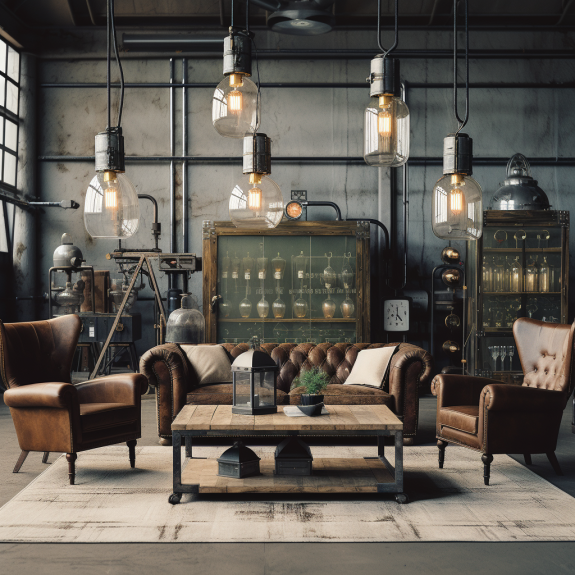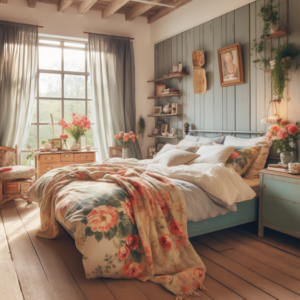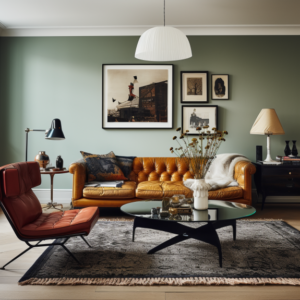The marriage of vintage and industrial design styles offers a unique and captivating approach to decorating your living spaces. This blend effortlessly combines the charm of bygone eras with the raw, utilitarian aesthetics of industrial design. The result is a decor style that celebrates the rich history of manufacturing while embracing modern functionality. In this article, we’ll explore the world of vintage industrial decor, offering insights into its origins, key elements, and how to infuse your home with this distinctive style.
1. The Roots of Vintage Industrial Design
The vintage industrial design movement finds its roots in the late 19th and early 20th centuries when factories and warehouses were transformed into living spaces. This adaptive reuse of industrial structures paved the way for unique design elements characterized by exposed brick walls, steel beams, and oversized windows. These features, once practical necessities, became the foundation of the vintage industrial style.
2. Key Elements of Vintage Industrial Decor
To achieve an authentic vintage industrial look, consider the following key elements:
- Raw Materials: Embrace raw and honest materials such as aged wood, distressed metal, and weathered leather. These materials add warmth and character to your decor.
- Exposed Structural Elements: Leave structural elements like steel beams and pipes exposed. These industrial components become design features that tell a story.
- Vintage Furniture: Incorporate vintage industrial furniture pieces like metal lockers, reclaimed wood tables, and antique leather sofas. These pieces are iconic in this design style.
- Factory Lighting: Choose industrial-style lighting fixtures like pendant lights with metal shades or vintage-inspired Edison bulbs. These fixtures provide both form and function.
- Repurposed Objects: Get creative by repurposing industrial objects such as factory carts as coffee tables or old factory gears as wall decor.
- Neutral Color Palette: Stick to a neutral color palette dominated by shades of gray, black, white, and brown. This creates a minimalist backdrop that allows industrial elements to shine.
3. Infusing Your Home with Vintage Industrial Style
Transforming your space into a vintage industrial haven requires attention to detail and a thoughtful approach:
- Exposed Brick Walls: If possible, expose brick walls to add texture and authenticity. If this isn’t an option, consider faux brick wallpaper or reclaimed brick veneer.
- Industrial Accessories: Incorporate accessories like vintage signs, old machinery parts, or metal storage bins. These pieces evoke the industrial era.
- Vintage Textiles: Soften the industrial edge with vintage textiles like distressed leather sofas, worn rugs, and cozy throw blankets.
- Artistic Expression: Showcase industrial-inspired artwork, such as industrial photography or abstract metal sculptures.
- Open Shelving: Install open shelves made from reclaimed wood and iron brackets to display your favorite industrial artifacts.
- Functional Furniture: Invest in functional furniture that serves a purpose. For example, vintage metal cabinets can offer both storage and industrial flair.
- Balance and Cohesion: Ensure that the vintage industrial elements are balanced within your space. Avoid overcrowding and maintain a cohesive look.
Conclusion
Vintage industrial decor is more than just a design style; it’s a celebration of history, craftsmanship, and adaptability. By combining the rugged charm of the industrial era with vintage aesthetics, you can create a living space that’s both visually striking and functional. Whether you’re drawn to the industrial factories of the past or the modern adaptations of today, vintage industrial decor offers a timeless appeal that bridges the gap between history and contemporary design.
In our upcoming articles, we’ll delve deeper into specific aspects of vintage industrial decor, providing tips and ideas to help you achieve the perfect balance of old-world charm and industrial chic in your home. Stay tuned for more inspiration on creating a space that reflects your unique style and appreciation for the past.



